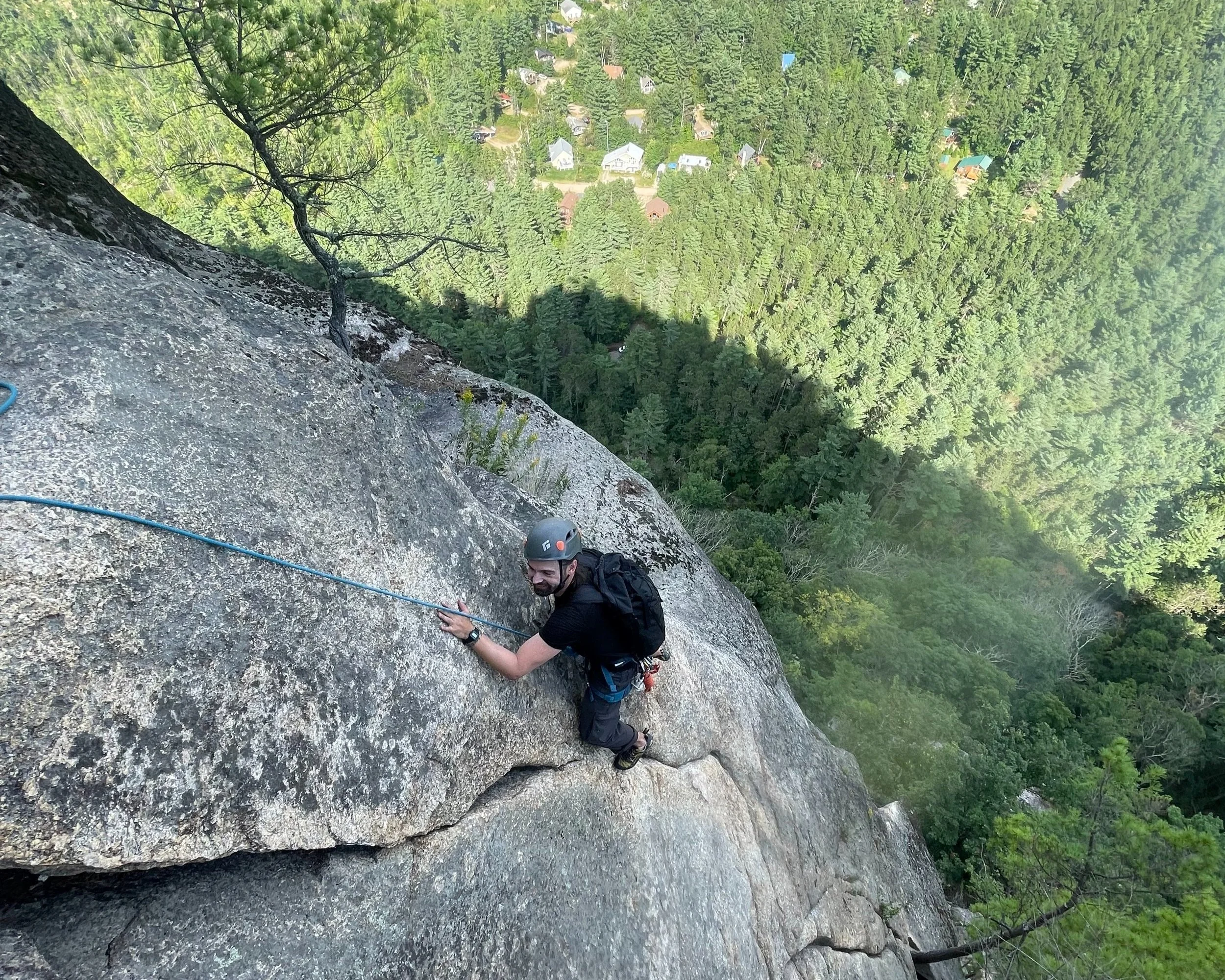Indoor Climbing vs Outdoor Climbing: What’s the Difference and How to Make the Transition
There’s something magnetic about real rock—the feel of rough stone under your fingers, the fresh air around you, and the excitement of the mountains. For many climbers, the call of the outdoors is more than just a change of scenery—it’s a chance to challenge yourself in new ways, connect with the environment, and experience climbing at its most authentic.
If you’ve spent most of your time in the gym—pulling plastic, refining technique, and building strength—you might be wondering what it’s like to take those skills outside. Transitioning from indoor to outdoor climbing is a big step—but it’s also one of the most rewarding moves you can make in your climbing journey.
In this post, we’ll break down the key differences between indoor and outdoor climbing and share how you can confidently and safely make the transition.
Crowded Climbing Gym.
What Makes Indoor More Approachable?
Indoor climbing is designed to be accessible, controlled, and consistent—making it an ideal environment for skill-building. Climbing gyms offer:
Color-coded routes and consistent grading
Padded flooring and predictable setups
Reliable anchors and belay stations
Stable lighting and climate control
This allows you to focus on refining your movement, gaining strength, and building confidence—without the added variables of the outdoor environment.
How Outdoor Climbing Challenges Your Skills and Fuels Growth
Outdoor climbing brings a new level of challenge—and a deeper connection to the climbing experience. You’ll learn to adapt to:
Natural rock features and hold textures
Unmarked routes and real-time problem solving
Changing weather, rock conditions, and lighting
Environmental ethics and access considerations
The challenges are greater—but so are the opportunities for growth. Outdoor climbing helps you develop resilience, adaptability, and a deeper appreciation for the craft. Every pitch teaches something new—not just about technique, but about focus, patience, and presence.
How to Transition from Indoor to Outdoor Climbing Confidently
Instructor working through an Introduction to Outdoor climbing day.
Every climber’s journey is different—but transitioning outdoors starts with the right knowledge, preparation, and guidance tailored to your experience level.
Here are four key steps to make that move with confidence:
1. Take a Course or Hire a Certified Guide
Professional instruction accelerates learning, reduces risk, and builds foundational skills. Our expert instructors can provide personalized professional training tailored specifically for indoor climbers ready to take the next step.
2. Learn Outdoor-Specific Safety Systems
While gym climbing teaches basic belaying, outdoor climbing requires skills like lead belaying, anchor cleaning, rappelling, and route assessment. These are best learned with hands-on guidance.
3. Climb with Experienced Partners
Climbing with skilled, outdoor-savvy partners gives you a chance to learn through mentorship while building confidence at your own pace.
4. Practice Environmental Stewardship
Climbing outside comes with responsibilities. Learn Leave No Trace principles, follow local climbing ethics, and help protect the places we love to climb.
Frequently Asked Questions
Q1: Is indoor climbing easier than outdoor climbing?
A: Generally, yes. Indoor climbing offers a predictable environment and standardized routes, which makes it more accessible. Outdoor climbing requires adapting to natural features and conditions—making it a more complex but rewarding challenge.
Q2: Can I go outdoor climbing if I’ve only climbed indoors?
A: Absolutely. With the right instruction and preparation, indoor climbers can transition successfully. Start with a course or climb with experienced partners who can guide you through the skills needed.
Q3: What gear do I need to climb outdoors?
A: Outdoor climbing typically requires more gear than gym climbing. Essentials may include a helmet, rope, quickdraws or trad protection, belay device, anchor materials, and appropriate footwear. Your guide or course will help you understand what’s needed based on the type of climbing.
Q4: What are the main differences between indoor and outdoor climbing?
A: Indoors, routes are clearly marked and the environment is controlled. Outdoors, climbers must interpret natural features, assess conditions, and make real-time decisions. It’s a more holistic experience—combining technique, judgment, and environmental awareness.
Ready to Unlock Your Full Potential Outdoors?
At Vertex Mountain Guides, we believe climbing is about more than just reaching the top—it’s about growth, confidence, and transformation.
Ready to unlock your full potential on real rock? Click here to start working with our expert instructors, who will provide personalized professional training tailored to you—helping you take the next step with confidence and support.
Whether you're just getting started or looking to expand your skills, we’re here to guide your journey—one climb at a time.
Climber high up on their first Multipitch Rock Climb.



